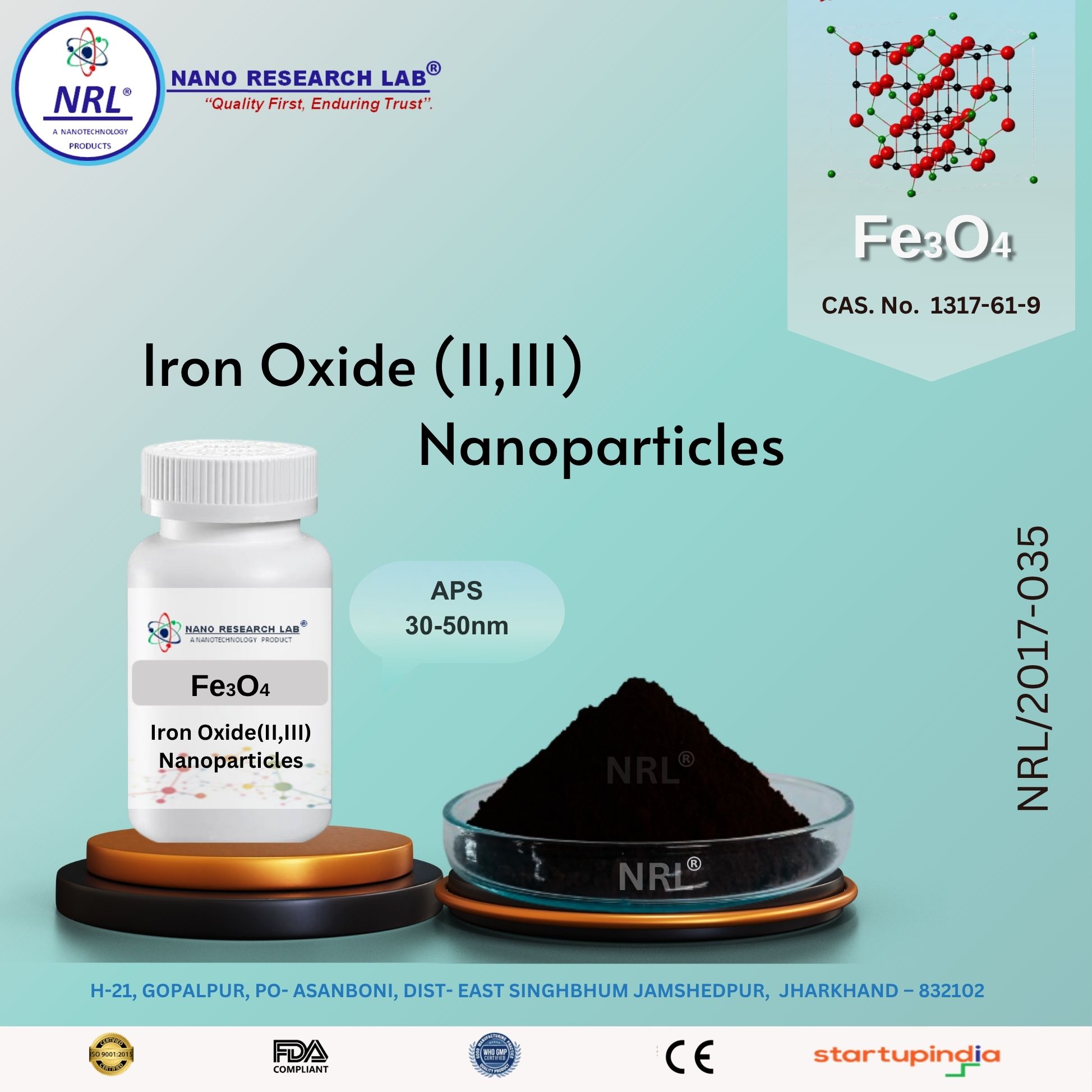
Iron Oxide Nanoparticles/Nanopowder (Fe3O4, 30-50nm, purity 99.5%)
₹1475.00
Iron Oxide Nanoparticles / Nanopowder (Fe₃O₄, 30–50 nm, Purity 99.5%)
Technical Specifications
Property | Specification |
|---|---|
Chemical Name | Iron(II,III) Oxide (Fe₃O₄, Magnetite) |
CAS Number | 1317-61-9 |
Molecular Weight | 231.53 g/mol |
Purity | ≥ 99.5% |
Appearance / Color | Black Fine Powder |
Particle Size (Average) | 30–50 nm |
Morphology | Nearly Spherical / Irregular |
Crystal Structure | Cubic Inverse Spinel |
Density | 5.2 g/cm³ |
Specific Surface Area (BET) | 30–60 m²/g |
Melting Point | ~1590 °C (decomposes) |
Boiling Point | Decomposes above 2000 °C |
Solubility | Insoluble in water; soluble in acids |
Magnetic Properties | Superparamagnetic / Ferrimagnetic (size-dependent) |
pH (in aqueous suspension) | ~7.0 |
Stability | Chemically stable; may oxidize to γ-Fe₂O₃ over time |
Key Features
High Purity (≥ 99.5%) for reliable performance in industrial and research applications.
Nanoscale Particle Size (30–50 nm) providing good surface area and controlled reactivity.
Cubic Inverse Spinel Structure: Ensures strong magnetic properties.
Superparamagnetic / Ferrimagnetic Behavior: Useful in biomedical, sensor, and magnetic applications.
Black Fine Powder: Easy to handle, disperse, and incorporate into composites.
Uniform Morphology: Promotes stable dispersion and consistent performance.
Moderate Surface Area: Balances reactivity and reduced aggregation compared to smaller nanoparticles.
Applications
1. Magnetic Applications:
Suitable for ferrofluids, magnetic recording, magnetic separation, and superparamagnetic research.
Applied in MRI contrast agents and magnetic hyperthermia therapy.
2. Catalysis & Chemical Processes:
Acts as a catalyst or support in oxidation/reduction and environmental remediation.
3. Pigments & Coatings:
Used as a black pigment for paints, ceramics, plastics, and polymer coatings.
4. Environmental & Water Treatment:
Functions as a magnetic adsorbent for heavy metals and organic pollutants.
Magnetic recovery enables reuse of nanoparticles in water treatment.
5. Nanotechnology & Advanced Materials:
Applied in nanocomposites, energy storage, sensors, and spintronic devices.
Used in research on functional magnetic nanomaterials.
6. Biomedical & Research Applications:
Explored for drug delivery, targeted therapy, biosensing, and hyperthermia studies.
